The Church of St. Mary of Magdalene, Jerusalem

The church dedicated to St. Mary of Magdalene is part of a Russian monastery situated on the Mount of Olives and located very close to the Garden of Gethsemane in Jerusalem near other important places of Christian worship such as the Church of All Nations and Dominos Flevit.
St. Mary of Magdalene (of Magdala) is one of the myrrh-bearing women out of whom Jesus had cast seven demons.
The place of St. Mary of Magdalene in the Holy Scripture
After her miraculous healing by our Lord, Mary or Maria, the woman from Magdala, along with other disciples, had followed Jesus all His earthy life [as the Scripture narrates: “Now it came to pass, afterward, that He went through every city and village, preaching and bringing the glad tidings of the kingdom of God. And the twelve were with Him, and certain women who had been healed of evil spirits and infirmities–Mary called Magdalene, out of whom had cast seven demons” (Luke 8 1-2)], been one of the myrrh-bearing women who went to the Holy Tomb on Easter morning to anoint the holy body of our Lord with spices (myrrh), as it was accustomed in the Hebrew tradition.

Mary of Magdalene was the first our Risen Lord appeared to, after His resurrection, as we read: “Now when Jesus was arisen early the first day of the week, he appeared first to Mary Magdalene, out of whom he had cast seven devils. And she went and told them that had been with him, as they mourned and wept. “ (Mark 16, 9-10).
Saint Mary of Magdalene and the tradition of red eggs
Since the ancient times during the Easter holidays, Christians have painted and decorated eggs. The egg is the symbol of a new life. Serving as a symbol of Easter, the red egg represents the Resurrected Christ, Who rises from the tomb breaking its seals. While breaking the eggs, Christians proclaim the Resurrection by saying: “Christ is Risen! Truly, He is Risen!”
The old Christian tradition attributes the red eggs to St. Mary of Magdalene.
It is said that after the Resurrection of Jesus Christ, Mary of Magdalene making use of her relationship with some prominent persons in Jerusalem, managed to arrive at a banquet held by the emperor Tiberius, with the intention to publicly proclaim the Resurrection of Jesus.
When the king passed by Mary who was holding a boiled white egg in her hand, seeing him, she proclaimed: “Christ is Risen!” Hearing this, the king laughed at her saying: “The chance that Jesus was raised from the grave is as likely as this egg you hold in your hand to turn red.” And at that very moment, the egg turned red.

The second tradition connected with the red eggs, comes especially from Greece. Thus, it is said that after the Crucifixion, Mary of Magdalene and Mary the Virgin and Mother of Jesus, placed a basket of eggs at the foot the Cross. The eggs were colored in red by the blood drained from the wounds of our crucified Lord. Taking the basket of red eggs Mary of Magdalene brought it before the emperor Tiberius Caesar.
The Church of St Mary of Magdalene – brief history
The church of St. Mary of Magdalene from Jerusalem was built in 1886 by Tsar Alexander the III-rd of Russia in honor of his mother, Empress Maria Alexandrovna. The church was built in a traditional Russian Style specific to sixteenth and seventeenth centuries Russia with its roof of golden domes (seven in number) in the form of an “onion”.
In 1888, the Great Duke Sergey Alexandrovich (the brother of Alexander the III-rd) and his wife Duchess Elizabeth of Hesse-Darmstadt (a granddaughter of QueenVictoria and the sister of the last Empress of Russia), attended the consecration of the church as representatives of the king.

The Great Duchess of Russia loved this church very much and she chose the famous painter Sergey Ivanov (1864-1910) for its decoration. Sergey has painted many scenes from the life of St. Mary of Magdalene, many lasting until today.
Above the iconostasis, there is an icon depicting St Mary of Magdalene holding a red egg while standing before the Roman Emperor Tiberius. She tells the king about the unjust trial of Jesus Christ. It is known that after the crucifiction of Jesus, Herod who was then governor of Jerusalem was sent into exile.

The iconostasis, made of white marble and bronze, is composed of a series of icons painted by renowned Russian artist Vereshchaguin. To the right of the iconostasis on a carved wooden throne, stands the miracle working icon of Our Most Holy Lady Hodighitria, brought from Lebanon. In the sixteenth century, the icon has miraculously escaped a fire that affected the whole church. During the cholera epidemic, many wonderful cures were attributed to this icon.
The church preserves the relics of two holy martyrs of Russia: the Duchess Feodorovna Elizabeth and the nun Varvara Yakovleva, both thrown into prison during the Bolshevik revolution of 1917 and martyred on July 18, 1918.
The Great Duchess Elizabeth, after her husband’ assassination in 1905, entered the monastic life. She founded a convent of nuns in Moscow, preoccupied mainly with charity works. After the revolution from 1918, Duchess Elizabeth, her sister Varvara and other members of the imperial family, was thrown into an abandoned mine where they died of starvation.

The bodies of two ascetics Elizabeth and Varvara, were brought to Jerusalem in 1920, and placed inside the crypt of St Mary of Magdalene Church.
The two women have been canonized as holy martyr in 1981, when their relics have been translated into the church for veneration.
The church basement also buries Princess Andrea of Greece’ body – the granddaughter of Duchess Elizabeth and the mother in law of Queen Elizabeth the IInd of England. Princess Andrea of Greece (Alice of Battenberg) and the mother of the Duke of Edinburgh visited the church in 1930. Her last wish was that her body be buried beside her aunt, Duchess Elizabeth.

During the Nazi domination, the princess has helped many Jews to hide from persecution, saving their lives. She died in 1969 in the Buckingham Palace. Her desire to be buried in the church St Mary of Magdalene was fulfilled only in 1988, when her body was placed in the underground crypt of the church.
The monastic community of St. Mary of Magdalene was founded in 1936 by Mother Mary (Robinson), a pious woman from England who after her conversion to Orthodoxy became a nun. The community includes approximately 30 nuns of different ethnicities: Russian, American, Australian, Arabic, Serbian and Romanian.

(Translated and adapted by blog author)

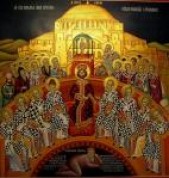 Christian Dogma
Christian Dogma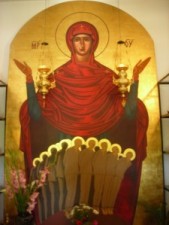 Christian Martyrs
Christian Martyrs Christian Orthodox Churches and Monasteries
Christian Orthodox Churches and Monasteries Christian Sermons and News
Christian Sermons and News Church's Teachings on Fasting
Church's Teachings on Fasting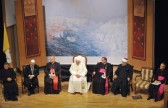 Ecumenism – a Great Heresy
Ecumenism – a Great Heresy Father George Calciu
Father George Calciu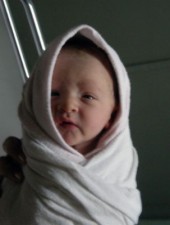 Life_a Sacred Gift form God
Life_a Sacred Gift form God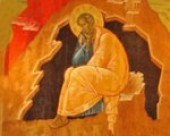 Orthodox Saints and Church Fathers
Orthodox Saints and Church Fathers Spiritual Elders
Spiritual Elders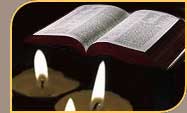 Daily Bible Readings
Daily Bible Readings Journey to Orthodoxy
Journey to Orthodoxy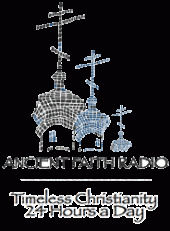 Listen to Ancient Faith Radio
Listen to Ancient Faith Radio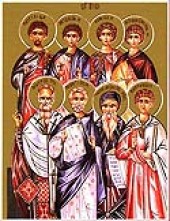 Orthodox Calendar of Feasts and Saints
Orthodox Calendar of Feasts and Saints Orthodox Christian Mission Center
Orthodox Christian Mission Center Orthodox Institute
Orthodox Institute OrthodoxChristianNetwork TV
OrthodoxChristianNetwork TV
1 comment
Comments feed for this article
May 29, 2011 at 4:14 AM
deborah
lots of joy looking at this.